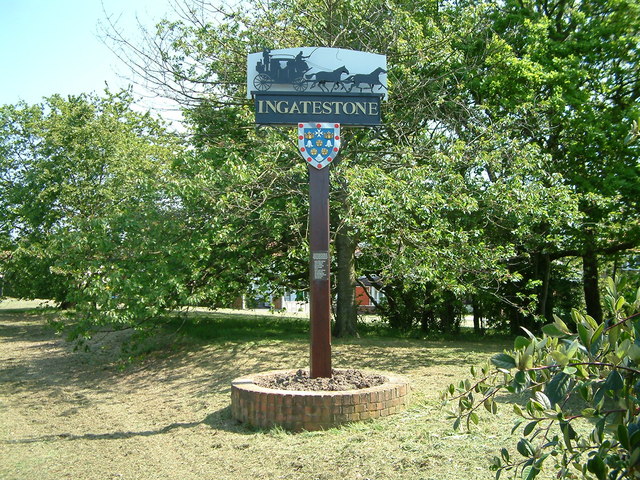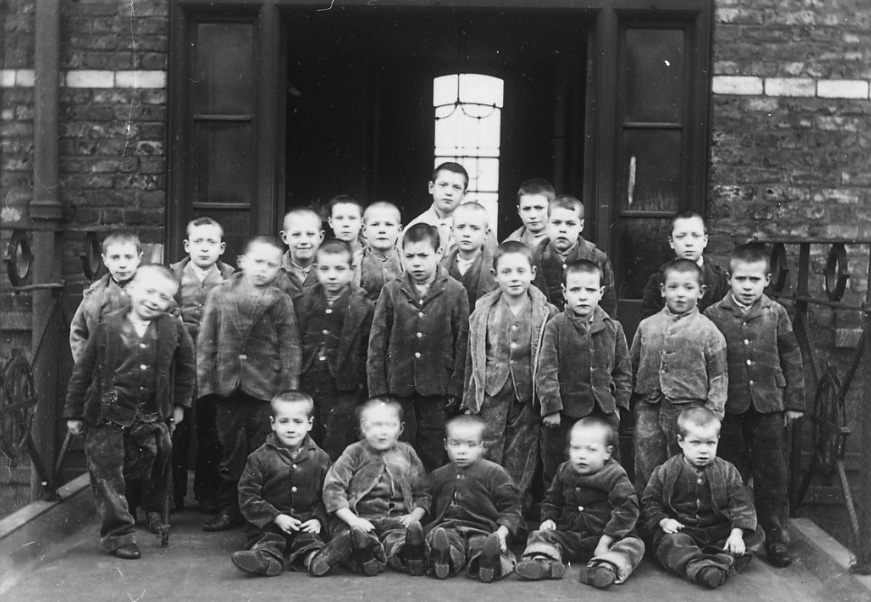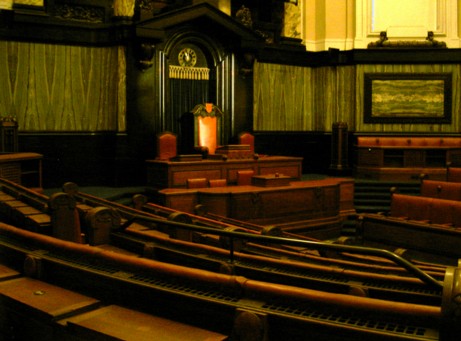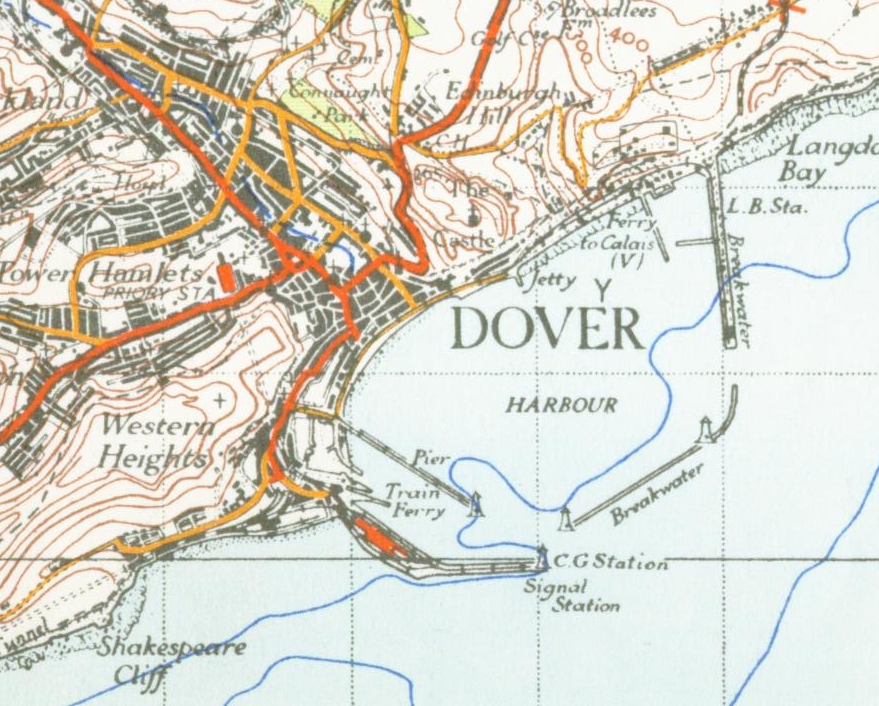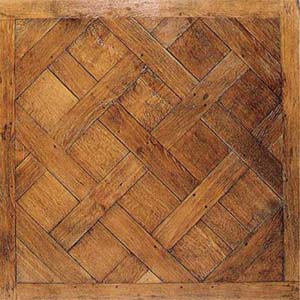|
Hutton, Essex
Hutton is an area of Brentwood, in Essex, England; Brentwood town centre lies 3 miles to the west. The area is split between modest housing estates and the largely affluent Hutton Mount. Hutton was formerly a civil parish, which was abolished in 1934 and absorbed into Brentwood. It has good transport links to Central London (around to the south-west) via Shenfield railway station which is just from Hutton. History The first police officer of the Essex Constabulary to be killed whilst on active duty was Robert Bambrough, who was drowned in a pond in Hutton by the criminal whom he was escorting from Billericay Magistrates' Court on 21 November 1850. In 1931 the parish had a population of 2,142. On 1 April 1934 the parish was abolished and merged with Brentwood. Hutton Poplars Opened in 1905. The name given to the Training School or Residential Home situated near the village of Hutton for destitute children from the Metropolitan Borough of Poplar in east London. Capable o ... [...More Info...] [...Related Items...] OR: [Wikipedia] [Google] [Baidu] |
Brentwood (borough)
The Borough of Brentwood is a Non-metropolitan district, local government district with borough status in the United Kingdom, borough status in Essex, England. The borough is named after its main town of Brentwood, Essex, Brentwood, where the council is based; it includes several villages and the surrounding rural area. The neighbouring districts are Epping Forest District, Epping Forest, City of Chelmsford, Chelmsford, Borough of Basildon, Basildon, Thurrock and the London Borough of Havering. History The former Brentwood Urban District had been created in 1899. Urban district (England and Wales), Urban districts were abolished in 1974 under the Local Government Act 1972. A new non-metropolitan district was created on 1 April 1974 covering the whole of the former Brentwood Urban District plus parts of another two districts, which were all abolished at the same time: *Brentwood Urban District *Chelmsford Rural District (two parishes only, rest went to City of Chelmsford, Chelms ... [...More Info...] [...Related Items...] OR: [Wikipedia] [Google] [Baidu] |
Orphanage
An orphanage is a residential institution, total institution or group home, devoted to the care of orphans and children who, for various reasons, cannot be cared by their biological families. The parents may be deceased, absent, or abusive. There may be substance abuse or mental illness in the biological home, or the parent may simply be unwilling to care for the child. The legal responsibility for the support of abandoned children differs from country to country, and within countries. Government-run orphanages have been phased out in most developed countries during the latter half of the 20th century but continue to operate in many other regions internationally. It is now generally accepted that orphanages are detrimental to the emotional wellbeing of children, and government support goes instead towards supporting the family unit. A few large international charities continue to fund orphanages, but most are still commonly founded by smaller charities and religious group ... [...More Info...] [...Related Items...] OR: [Wikipedia] [Google] [Baidu] |
Greater London Council
The Greater London Council (GLC) was the top-tier local government administrative body for Greater London from 1965 to 1986. It replaced the earlier London County Council (LCC) which had covered a much smaller area. The GLC was dissolved in 1986 by the Local Government Act 1985 and its powers were devolved to the London boroughs and other entities. A new administrative body, known as the Greater London Authority (GLA), was established in 2000. Background In 1957 a Royal Commission on Local Government in Greater London had been set up under Edwin Herbert, Baron Tangley, Sir Edwin Herbert to consider the local government arrangements in the London area. It reported in 1960, recommending the creation of 52 new London boroughs as the basis for local government. It further recommended that the LCC be replaced by a weaker strategic authority, with responsibility for public transport, road schemes, housing development and regeneration. The Greater London Group, a research centre of ac ... [...More Info...] [...Related Items...] OR: [Wikipedia] [Google] [Baidu] |
London County Council
The London County Council (LCC) was the principal local government body for the County of London throughout its existence from 1889 to 1965, and the first London-wide general municipal authority to be directly elected. It covered the area today known as Inner London and was replaced by the Greater London Council. The LCC was the largest, most significant and most ambitious English municipal authority of its day. History By the 19th century, the City of London Corporation covered only a small fraction of the metropolis. From 1855, the Metropolitan Board of Works (MBW) had certain powers across what is now Inner London, but it was appointed rather than elected. Many powers remained in the hands of traditional bodies such as parishes and the counties of Middlesex, Surrey, and Kent. The Local Government Act 1888 created a new County of London, with effect from 1889, and the English County council#England, county councils, of which LCC was one. This followed a succession of scandal ... [...More Info...] [...Related Items...] OR: [Wikipedia] [Google] [Baidu] |
Dover
Dover ( ) is a town and major ferry port in Kent, southeast England. It faces France across the Strait of Dover, the narrowest part of the English Channel at from Cap Gris Nez in France. It lies southeast of Canterbury and east of Maidstone. The town is the administrative centre of the Dover District and home of the Port of Dover. Archaeological finds have revealed that the area has always been a focus for peoples entering and leaving Great Britain, Britain. The name derives from the River Dour that flows through it. In recent times the town has undergone transformations with a high-speed rail link to London, new retail in town with St James' area opened in 2018, and a revamped promenade and beachfront. This followed in 2019, with a new 500m Pier to the west of the Harbour, and new Marina unveiled as part of a £330m investment in the area. It has also been a point of destination for many English Channel migrant crossings (2018-present), illegal migrant crossings. The Port ... [...More Info...] [...Related Items...] OR: [Wikipedia] [Google] [Baidu] |
Guston, Kent
Guston is a village and civil parish in the Dover District, Dover district of Kent, in South East England. The village lies about a quarter of a mile north of the campus of the Duke of York's Royal Military School, near Martin Mill. In the 1950s the village was the site of a public house, a post office, a Anglo-Saxons, Saxon church and approximately one-hundred homes. There is also a Swingate Mill, Guston, windmill present, which has been converted into a house. Nearby villages include Whitfield, Kent, Whitfield, East Langdon, Church Whitfield, Pineham and Buckland Filleigh, Buckland. The River Dour is approximately 2.71 km away from Guston, and there is easy access to main roads, with the A2 and A258 running around and through the village. In the early 1870s, Guston was described by John Wilson: "A parish in Dover district, Kent; 2½ miles E by N of Ewell r. station, and 2½ N of Dover. Posttown, Dover. Acres, 1, 421; of which 20 are water. Real property, £2, 554. Pop., 43 ... [...More Info...] [...Related Items...] OR: [Wikipedia] [Google] [Baidu] |
Duke Of York's Royal Military School
The Duke of York's Royal Military School, in Guston, Kent, commonly known as the Duke of York's, is a co-educational academy with military tradition for students aged 11 to 18. In 2010, the school became an academy under the Ministry of Defence and accepts applications from any student wishing to enroll, in a change from the school's tradition of only accepting the children of veterans and/or serving members of the armed forces. This break with tradition had the effect of transforming the school into a state boarding school and offered it a membership in the State Boarding Forum and Boarding Schools Association. The latter development yet once again changed the school's oversight and transferred it from the Ministry of Defence to the Department for Education. The curriculum employed by The Duke of York’s includes some military traditions, such as the use of uniforms and ceremonial parades, however the School does employ a monitorial style of education modelled on the En ... [...More Info...] [...Related Items...] OR: [Wikipedia] [Google] [Baidu] |
Eton College
Eton College ( ) is a Public school (United Kingdom), public school providing boarding school, boarding education for boys aged 13–18, in the small town of Eton, Berkshire, Eton, in Berkshire, in the United Kingdom. It has educated Prime Minister#History, prime ministers, world leaders, Nobel laureates, Academy Award and BAFTA award-winning actors, and generations of the aristocracy, and has been referred to as "the nurse of England's statesmen". The school is the largest boarding school in England, ahead of Millfield and Oundle School, Oundle. Together with Wellington College, Berkshire, Wellington College and Downe House School, it is one of three private schools in Berkshire to be named in the list of the world's best 100 private schools. Eton charges up to £52,749 per year (£17,583 per term, with three terms per academic year, for 2023/24). It was the sixth most expensive Headmasters' and Headmistresses' Conference boarding school in the UK in 2013–14. It was founded ... [...More Info...] [...Related Items...] OR: [Wikipedia] [Google] [Baidu] |
Independent School (UK)
In the United Kingdom, private schools (also called independent schools) are schools that require fees for admission and enrolment. Some have financial endowments, most are governed by a board of governors, and are owned by a mixture of corporations, trusts and private individuals. They are independent of many of the regulations and conditions that apply to state-funded schools. For example, the schools do not have to follow the National Curriculum for England, although many such schools do. Historically, the term ''private school'' referred to a school in private ownership, in contrast to an endowed school subject to a trust or of charitable status. Many of the older independent schools catering for the 13–18 age range in England and Wales are known as public schools, seven of which were the subject of the Public Schools Act 1868. The term ''public school'' meant they were then open to pupils regardless of where they lived or their religion (while in the United States and ... [...More Info...] [...Related Items...] OR: [Wikipedia] [Google] [Baidu] |
Central Heating
A central heating system provides warmth to a number of spaces within a building from one main source of heat. A central heating system has a Furnace (central heating), furnace that converts fuel or electricity to heat through processes. The heat is circulated through the building either by fans forcing heated air through Duct (flow), ducts, circulation of low-pressure steam to Radiator, radiators in each heated room, or Pump, pumps that circulate hot water through room radiators. Primary energy sources may be fuels like coal or wood, oil, kerosene, natural gas, or electricity. Compared with systems such as Fireplace, fireplaces and Wood-burning stove, wood stoves, a central heating plant offers improved uniformity of temperature control over a building, usually including automatic control of the furnace. Large homes or buildings may be divided into individually controllable zones with their own Temperature control, temperature controls. Automatic fuel (and sometimes ash) handli ... [...More Info...] [...Related Items...] OR: [Wikipedia] [Google] [Baidu] |
Parquetry
Parquet (; French for "a small compartment") is a geometric mosaic of wood pieces used for decorative effect in flooring. Parquet patterns are often entirely geometrical and angular—squares, triangles, Lozenge (shape), lozenges—but may contain curves. The most popular parquet flooring pattern is herringbone pattern, herringbone. Etymology The word derives from the Old French ''parchet'' (the diminutive of ''parc''), literally meaning "''a small enclosed space''". History Large diagonal squares known as ''parquet de Palace of Versailles, Versailles'' were introduced in 1684 as ''parquet de menuiserie'' ("woodwork parquet") to replace the marble flooring that required constant washing, which tended to rot the joists beneath the floors. Such ''parquets en losange'' were noted by the Swedish architect Daniel Cronström at Versailles and at the Grand Trianon in 1693. Materials Woods contrasting in color and grain, such as oak, walnut, cherry, tilia, lime, pine, maple etc. ... [...More Info...] [...Related Items...] OR: [Wikipedia] [Google] [Baidu] |
